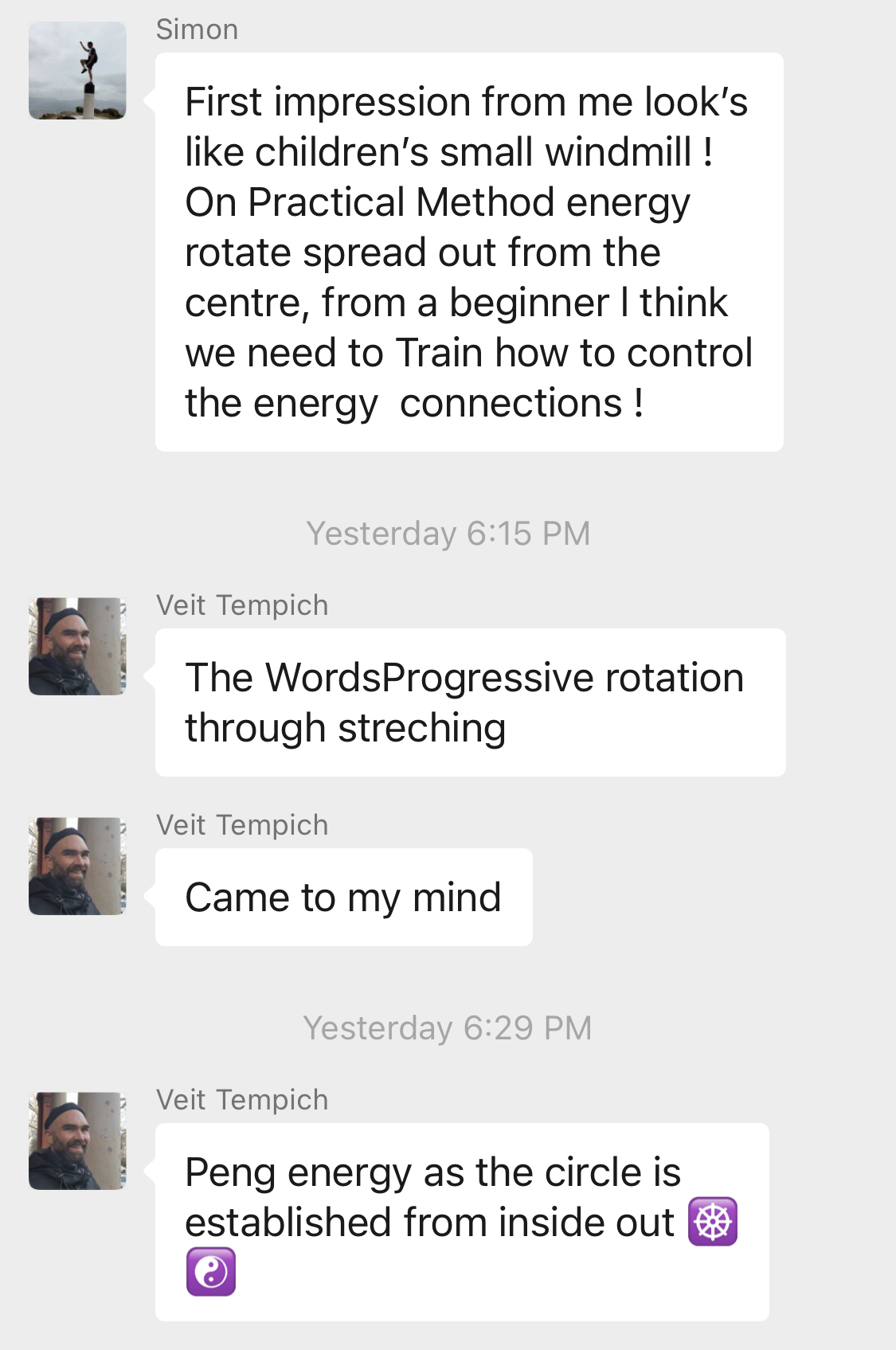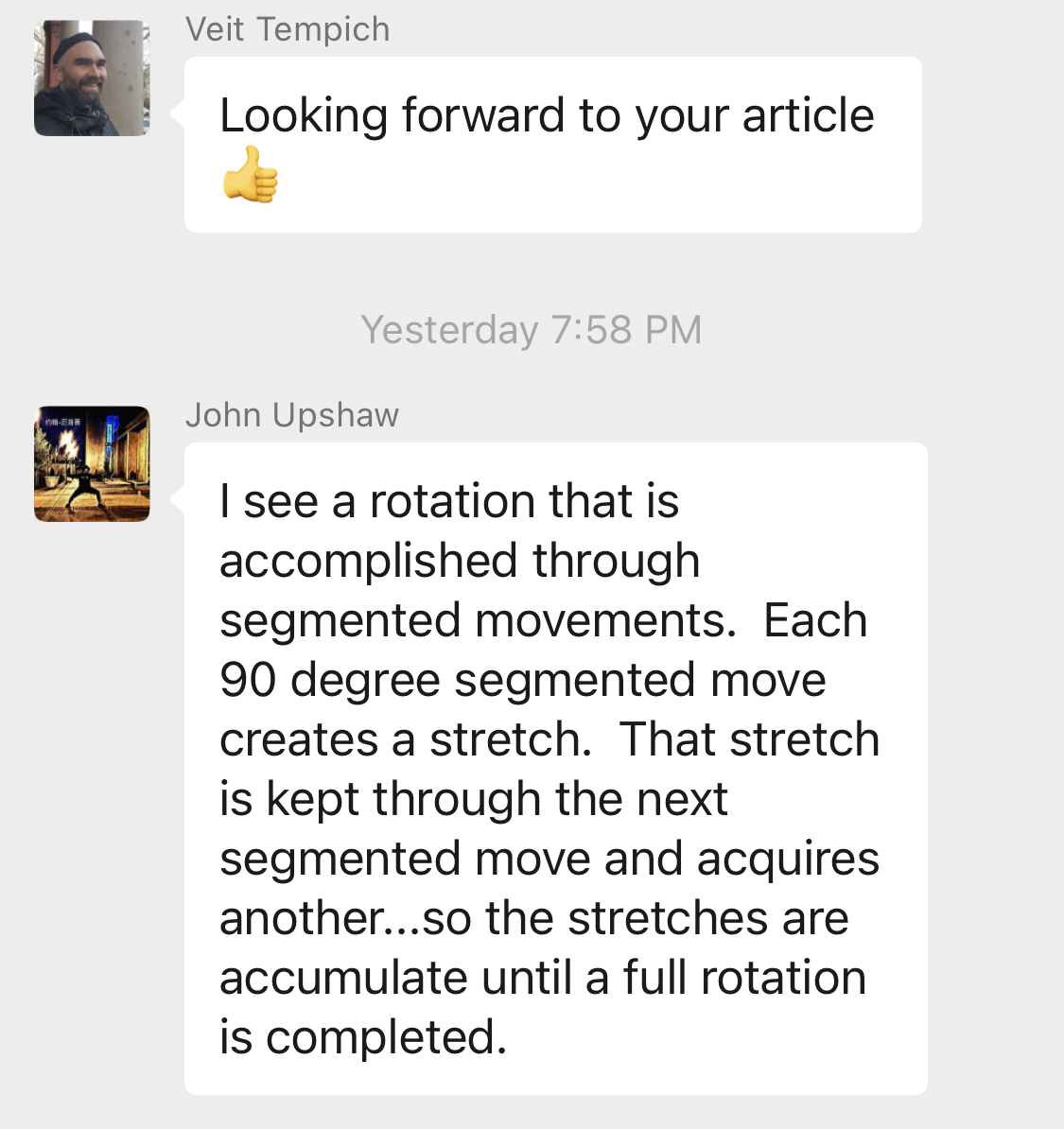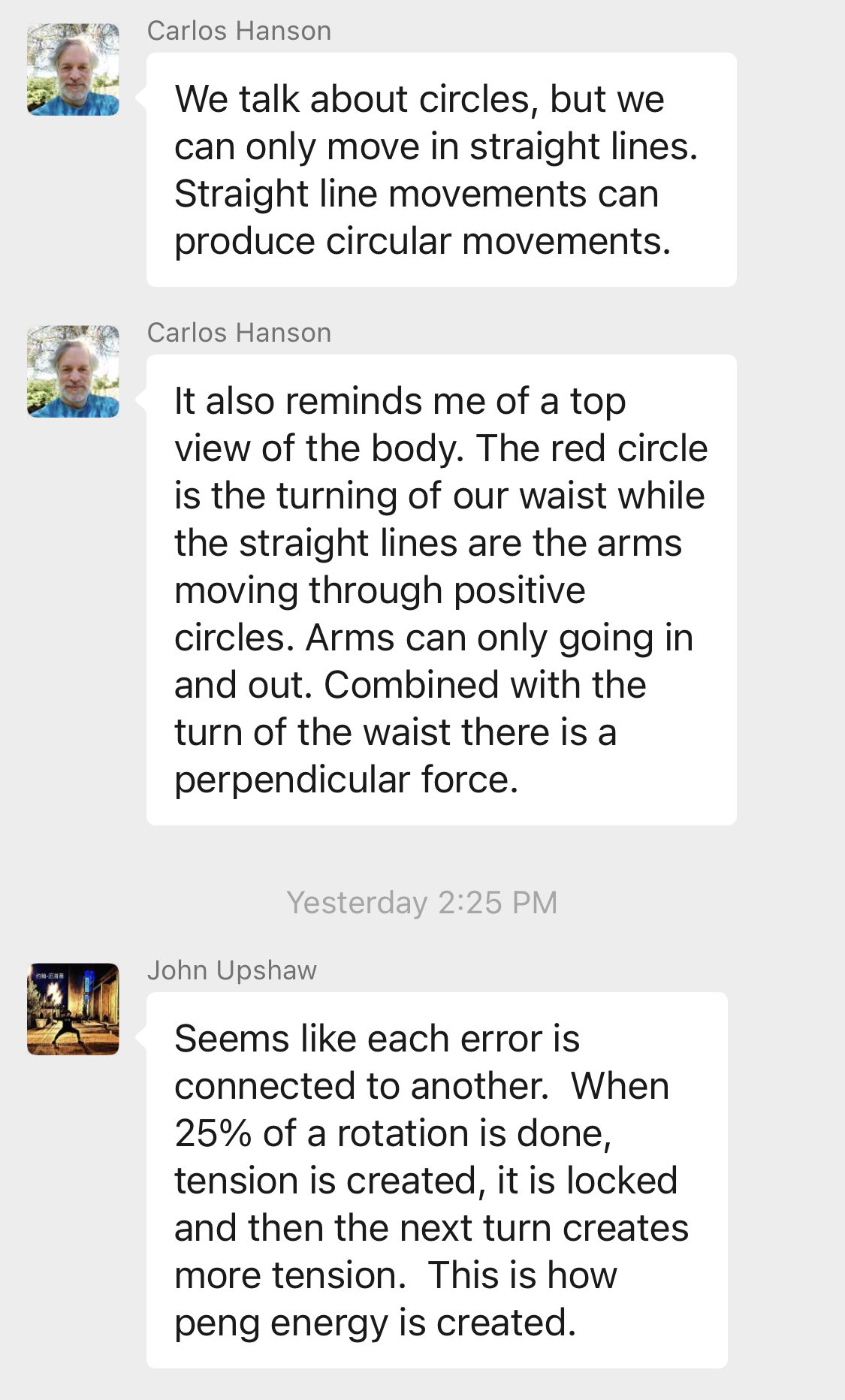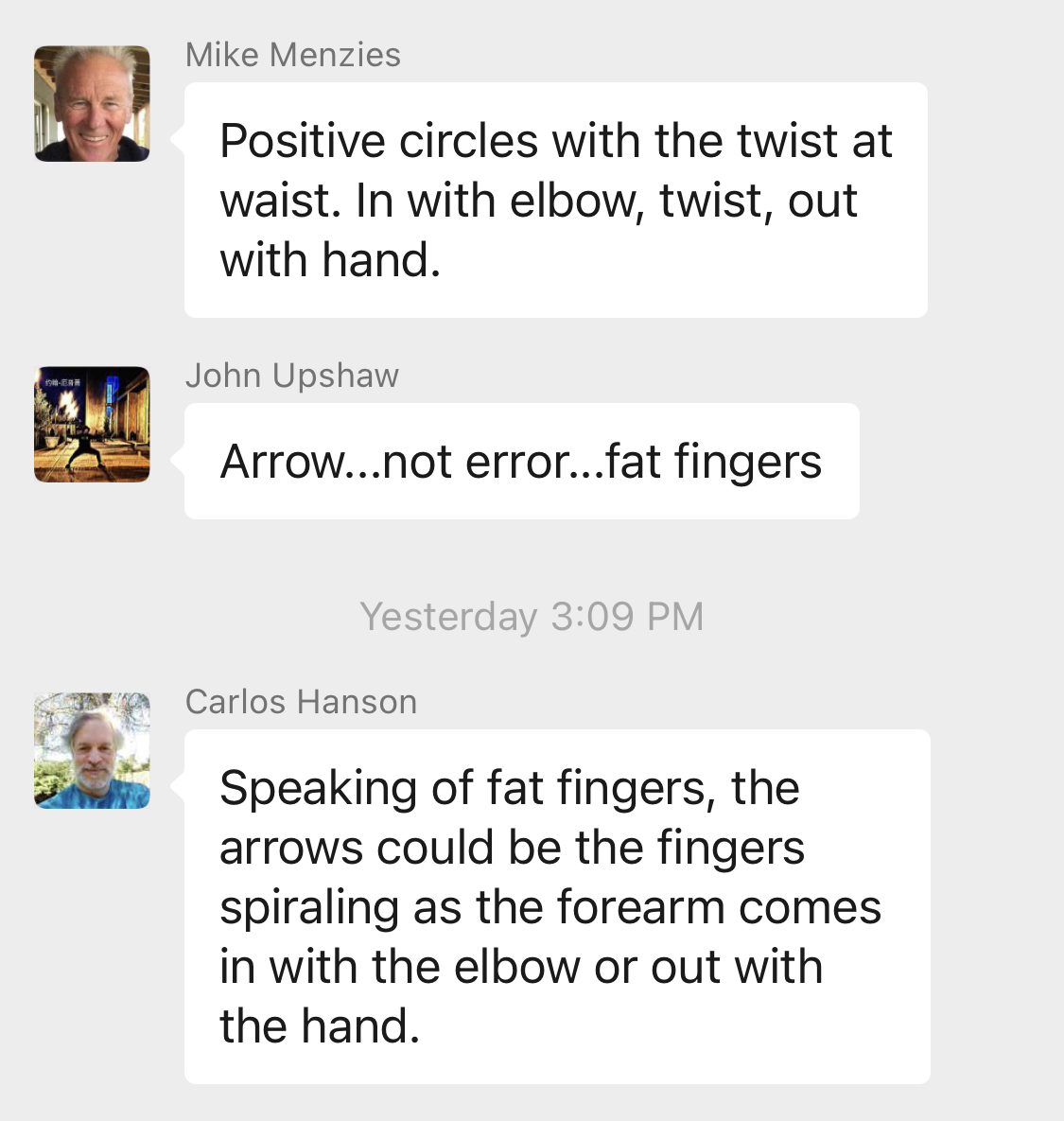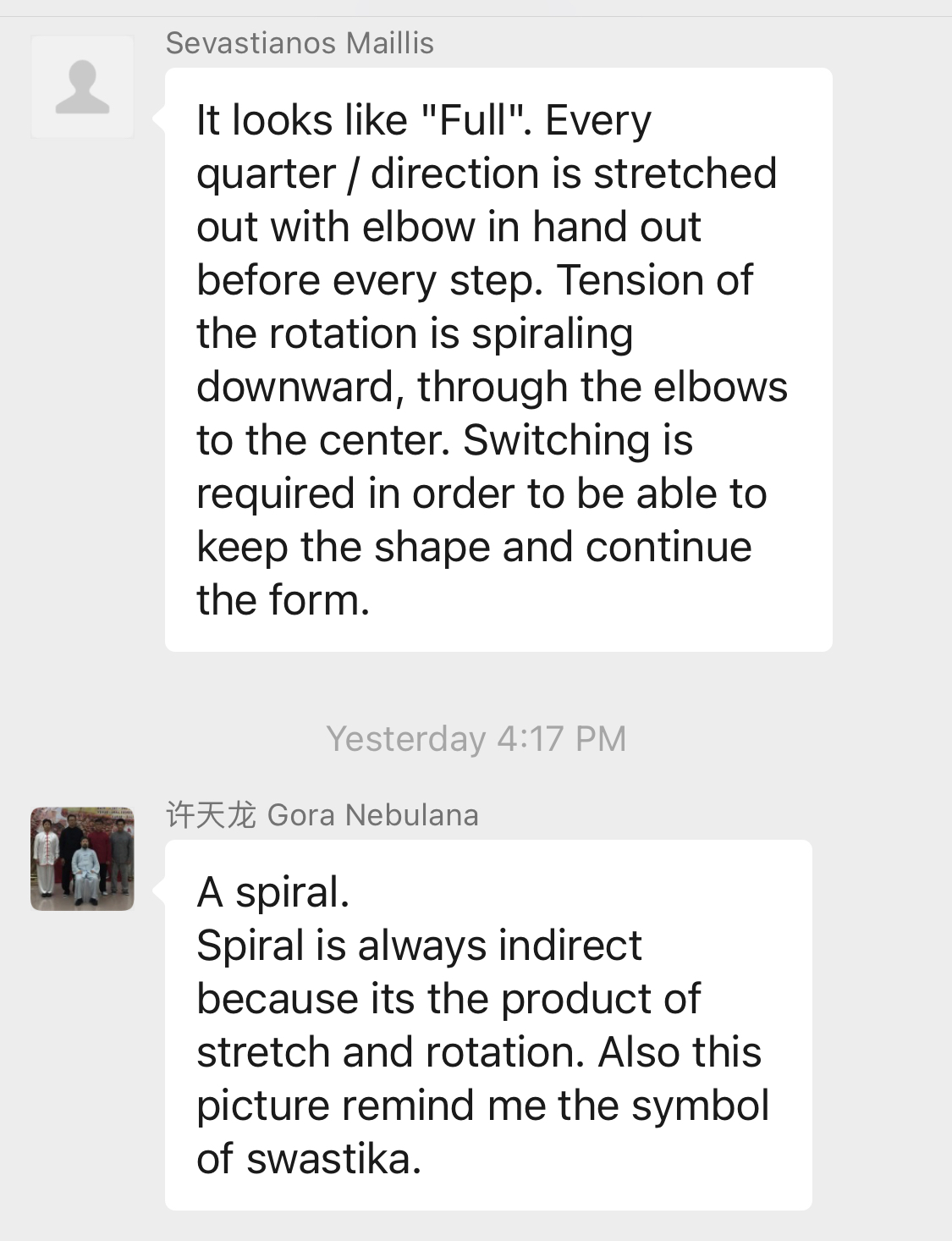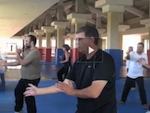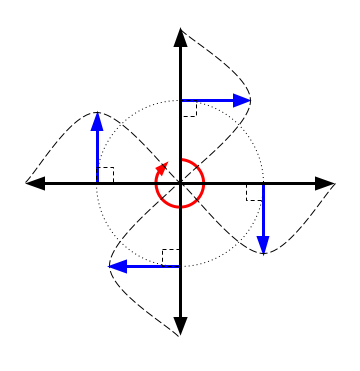
Figure 1
In Taiji, we often hear 【曲中求直】(qu zhong qiu zhi) “Seeking the straightness in the curve”. Where is the curve? Where is the straightness? In Figure 1, the red line represents the curve while the blue lines show the straightness. If we can rotate, the red line will appear. When the red line is there, the blue lines will also show up. Each blue line represents the energy path that the opponent perceives. If the rotation can continue, when one of the blue lines moves off its original position and direction, the blue line right after will take its place. This also means that the energy is not broken and will keep coming. If we want to truely rotate, the black line is key. The black lines represnt the stretches that must be maintained against the axis of the rotation throughout the rotation. If we want to do those stretches, the axis of the rotation must not toss. Any tossing will nullify any attempt to stretch. “Seeking the straightness in the curve” in Practical Method is a concept of power conversion. Rotational force is converted to linear force. Reversal of yin and yang is a form of conversion, and there is also the saying of “Yin is rooted in yang, and yang is rooted in yin”. In Figure 1, the red line is the action, while the blue lines are the resulting force. If the blue lines are the action, the red line is the resulting force. Indirect power is the ability to convert power.
Let’s use a physical scenario to demonstrate this further. Assume that one of the black lines is your arm touching the opponent’s chest. The red line represents a horizontal rotation with your torso. In order for the opponent to feel your power, the angle at the shoulder between your arm and chest must be kept constant duration your rotation (much like how a revolving door works). The opponent will feel a straight forward push from the arm, but in fact, it comes from the torso rotating. In practice, what are some typical problems we run into?
- The shoulder folds as the torso rotates.
- The elbow moves as the torso rotates.
- You push towards the opponent with the arm.
- You move the torso instead of rotating it
- You can’t hold your overall structure as the torso rotates.
- You toss the torso while you attempt to rotate.
In order to successfully execute such a move, it requires integration of various body parts performing their specific functions. Before such integration can happen, we train each and every body part according to the rules you learn in Practical Method. Yilu is the tool.
Happy Training!
Related article:
Before this article was published, people guessed what Figure 1 was trying to show or shared what it made them think in terms of Practical Method. Here are the responses:
